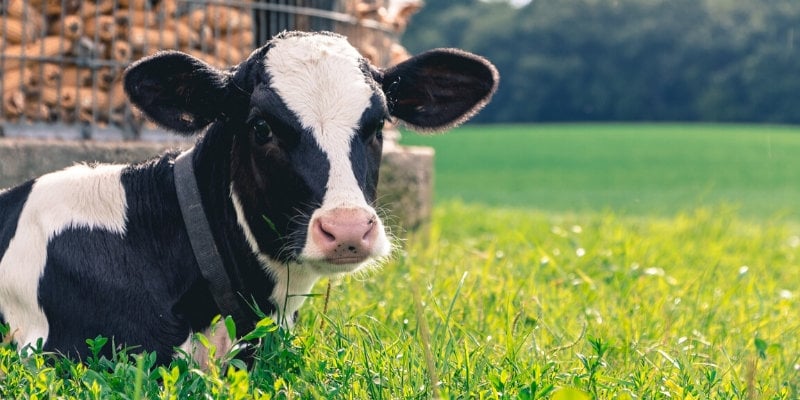From Pineapples to Kombucha Tea: See the Ingenious Way Designers Are Making Vegan Leather
Gloves, handbags, wallets, watches, you name it: There’s a long list of accessories that have traditionally been made from leather—yes, the unfortunate kind that was originally the skin of an animal. And as PETA’s dog-leather investigation demonstrates, this could mean a lifetime of misery for animals just like the ones we share our homes with, not to mention indicating trouble for the environment, considering the huge amounts of feed, pastureland, water, and fossil fuels required to turn animal skins into accessories. Not to fret, friends—the “leather” industry is being redefined with sustainable vegan materials that will replace cow and dog skin permanently.
Check out the following list of vegan leather accessories that are as chic as they are kind to animals and the planet.
Pineapple
Created by textile company Ananas Anam, Piñatex is made from the fibers of pineapple leaves grown in the Philippines, which are both eco-friendly and biodegradable. These are a byproduct of the fruit’s harvest, so no extra land, water, or pesticides are required to produce the material.
The transformation into usable vegan leather occurs as the leaves are degummed and made into a luxe mesh material that feels similar to felt.
Coconut Water
New fashion brand Malai Design & Materials uses bacterial cellulose derived from coconut water to create a leather-like material. This water is usually discarded from a factory in Kerala, India, but product designers Susmith C. Suseelan and Zuzana Gombosova think that sustainable vegan leather made from such sources needs to become the market standard. “Nobody thinks of the harm done to the environment and the number of animals [who] are slaughtered in the process,” Suseelan told an Indian newspaper. “It’s high time that an eco-friendly substitute for leather is introduced in the market.”
Soy
Women from XXLab in Yogyakarta, Indonesia, are creating a new soy leather made from the liquid runoff of tofu production. This low-cost, zero-waste fabric has been used to make shoes, purses, and wallets. The promising new leather-like material has not become available to the public yet, but we look forward to seeing the results of XXLab’s fascinating project.
Apples
The Apple Girl considers apple leather as “a substitute to conventional, fossil fuel derived textiles.” Her company is the first supplier of this new material, that is also edible and 100 percent biodegradable.
Teak Leaf
Teak leaf leather is lightweight, durable, water-resistant, anti-fungal, and environmentally friendly. In a process inspired by the traditional handmade one from Thailand, the teak leaves are harvested from fallen leaves, soaked in water, dyed, and then arranged flat together and set out to dry. The end result provides large sheets of leaf leather that can be sewn to make any clothing item or accessory imaginable.
Mushrooms
The extraordinary mushroom can be used for so many things, and now, it’s been made to mimic the texture of leather made from animals. MuSkin is the new vegan leather on the block, made from mushroom caps and tanned with nontoxic ingredients, unlike leather made from the skin of cows or other animals. The new biodegradable material is softer, more breathable, and more water repellent than leather derived from animals—perfect for everyday items such as belts, purses, and shoe soles. To learn more, check out the video below:
Kombucha Tea
It’s no longer just your go-to healthy brunch drink. Researchers at Iowa State University and others have actually been using kombucha tea to make vegan leather, affectionately calling it “teather.” Although they are still testing the material they’ve made from harvesting fibers from a kombucha-based mixture, we can’t wait to see what kombucha pieces will be lining the runways soon.
Peruvian Plants and Fruits
A winner of H&M Foundation’s 2019 Global Change Award, Le Qara makes 100% biodegradable “lab leather” out of microorganisms derived from exotic flowers and fruits native to Peru. Watch the short video below to learn more:
Mulberry Tree Leaves
MulbTex is a new material made from the paper pulp of mulberry tree leaves, which is used to coat cotton canvas and glazed with tree sap to make it water resistant.
Fruit Waste
A design duo in Rotterdam is currently developing a vegan leather to help solve the world’s food waste problem. Fruitleather Rotterdam’s website explains that they are busy “developing a new, eco-friendly process that converts leftover fruits into a durable leather-like material. The material is being further developed so that it will be strong enough to be used for shoes, handbags and other products in the future.”
Classic Polyurethane
This traditional variation on vegan leather is a resilient, flexible, and durable fabric that can be molded into a variety of goods. Although not as sustainable as the aforementioned materials, this synthetic fabric doesn’t do half the damage caused by the leather industry. The following accessories are just some examples of the uses that this versatile material has been put to.
Paper, Wood, and Cork
Nothing says sustainable, luxury style like wearing trees. We’re not kidding! The use of reclaimed wood and cork oak (made of water-resistant cells on the outer bark of cork oak trees that naturally grow back) makes these products that much more appealing to the gal next to you and, oh yeah, helps the planet, too.
The Recycled Variety
Whether it’s recycled rope or recycled plastic bottles, repurposing anything is much better for the environment than starting from scratch. And when it looks this good, why not? Recycle, reduce, reuse, refashion!
Upcycled Coffee Grounds and Plastic Bottles
German sneaker company nat-2 loves proving that you can make classy shoes in innovative ways. Its new line uses recycled coffee grounds and plastic bottles to create a luxe material that looks like suede, and it has also made shoes from stone, grass, corn, beans, and other materials.
Plant based shoes made from coffee: https://t.co/oPhbNFWTwQ #designvegan #technology #veganstartup #crueltyfree
— Design Vegan (@designvegan) November 21, 2018
Denim
All right, so denim doesn’t quite have the same weatherproof properties that most vegan leather does, but it’s used to create a lot of the same accessories and apparel that are typically made with leather. And considering that the fabric can take on a variety of compositions, hold shape, and take on a number of colors, it’s no wonder that designers continue to employ this animal-friendly material in many ways.
***
And there you have it. Read it and weep, leather industry. Times are a changin’, and we can’t welcome it more! Take a sustainably chic step forward with us by supporting vegan leather suppliers the next time you’re out shopping for accessories like those listed above.









